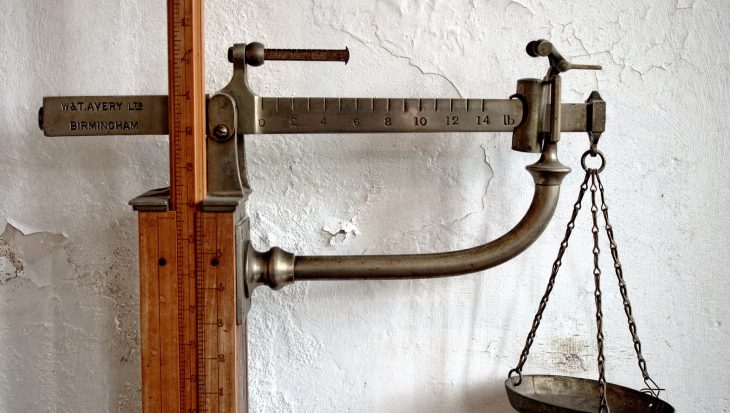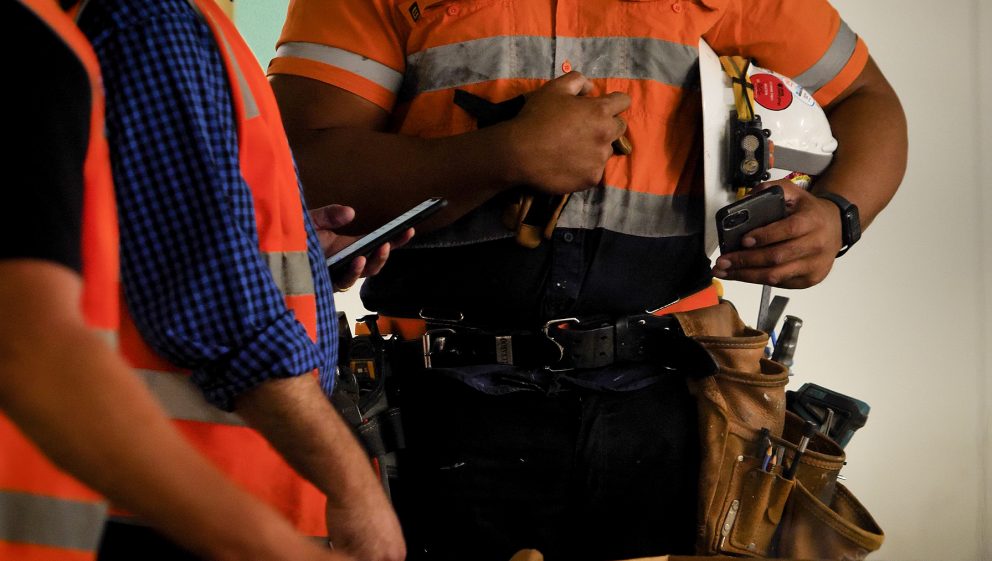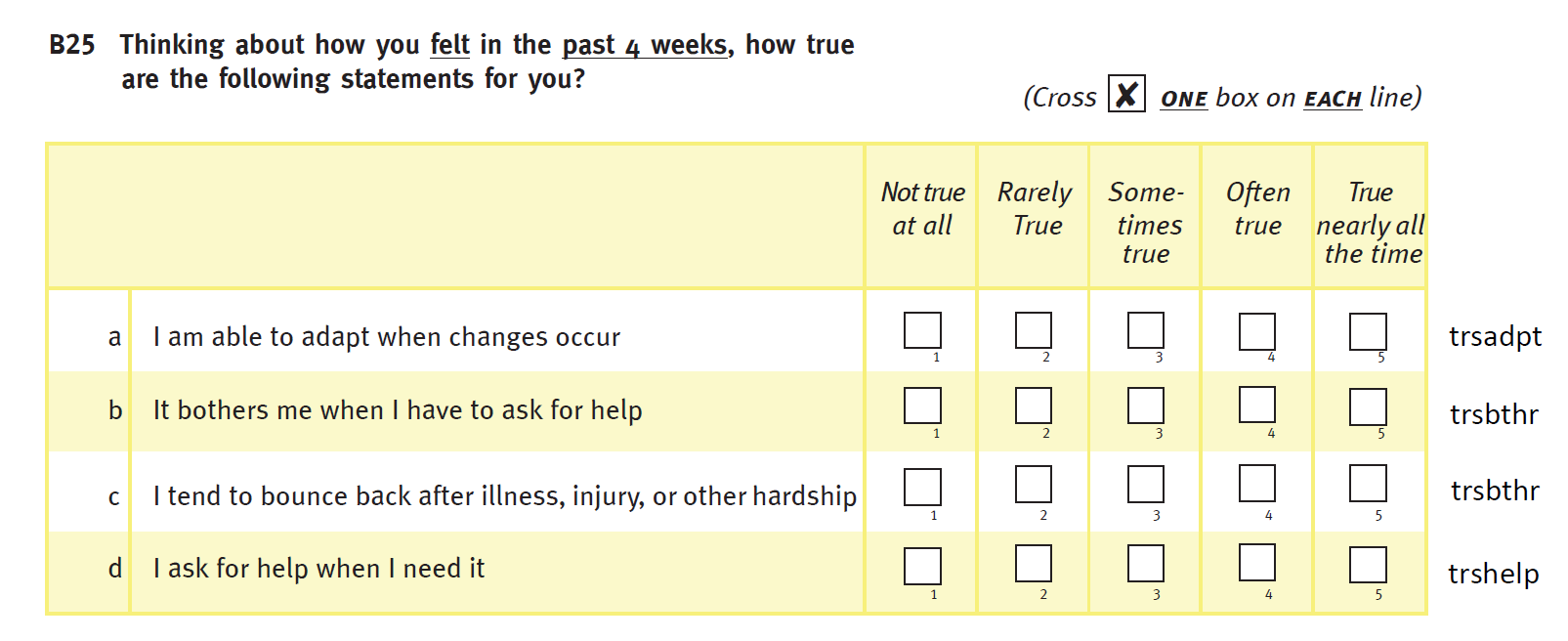The panel includes a 2-item version of the Connor-Davidson Resilience Scale (CD-RISC), questions a and c above. (Vaishnavi S, Connor K, Davidson JRT. 2007. An abbreviated version of the Connor-Davidson Resilience Scale (CD-RISC), the CD-RISC 2: psychometric properties and application in psychopharmacological trials. Psychiatry Research, 152: 293-297.)
The other two items, b and d, are drawn from the 46-item version of the Conformity of Masculinity Norms Inventory [CNMI] (Hammer JH, Heath PJ & Vogel DL. 2018. Fate of the total score: Dimensionality of the Conformity to Masculine Role Norms Inventory (CMNI-46). Psychology of Men & Masculinity, 19: 645-651).
When our partners Simetrica-Jacobs conducted the analysis of the data, they were able to derive a value for increased resilience based on the two items from the CD-RISC, but the analysis of how the two self-reliance items related to each other was less clear cut. They tried a couple of alternative specifications that involved question b, but found it did not really seem to have much of an influence. They made the decision to to just use the data from question d to reduce complication for our ASVB users when applying the value.
As the self-reliance questions were taken from an instrument originally relating specifically to attitudes among men, Simetrica-Jacobs looked at the impact on that specific group in the data, but didn’t find any significant differences between sexes, so again chose to not over complicate application for our ASVB users.
Both of the values derived had high statistical significance and passed Simetrica-Jacobs quality assurance processes.
As a result of only using one of the items from the self-reliance questions, we have decided to list this value as “Increased help-seeking” rather than “Increased self-reliance” as we feel this more accurately reflects someone having increased willingness to seek help when needed.


 Program and Operations Manager MATES in Construction - Tu Boldeman
Program and Operations Manager MATES in Construction - Tu Boldeman

